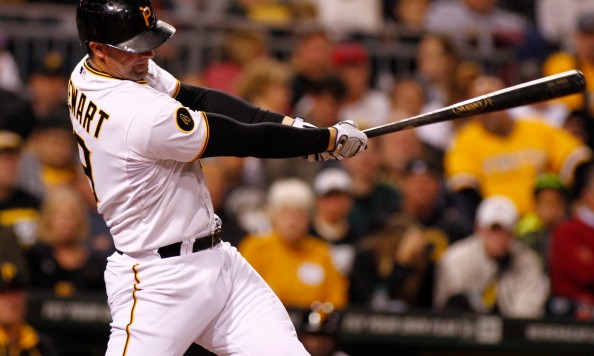If you’ve been paying much attention to the evolution of the sabermetric-leaning public’s understanding of catcher framing for the last couple years, you know that it feels like more of a positive feedback loop than anything: every study that comes out seems to amplify the effect of good framing catchers even further. Last month, Jonathan Judge, Harry Pavlidis, and Dan Brooks came out with a study in Baseball Prospectus that finally gave a solid answer to the question that everyone asked for the entire duration of the aughts: How did Brad Ausmus keep getting starting jobs for so long despite being such a bad hitter. As it turns out, six of the top 20 framing seasons of all-time belonged to Ausmus, and that made him a valuable player despite his inability to hit.
Before the 2014 season, the Pirates traded for Chris Stewart and non-tendered Mike McKenry. There was some consternation and tooth-gnashing that followed that move: McKenry was a fan-favorite for a lot of reasons and showed some signs of being a decent hitter to boot. Stewart, more or less, was a generic backup catcher with very little offensive capabilities but a reputation for strong defense. A year later, and the Pirates don’t seem to mind the possibilities that Stewart could catch a whole bunch of games for them in 2015, as he’s the primary backup to the fragile Francisco Cervelli.
Let’s use McKenry and Stewart as an illustration of our best understanding of catcher defense at the moment. They played a relatively similar amount of baseball last year (McKenry in 57 games for the Rockies, Stewart in 49 for the Pirates). Stewart hit decently compared to expectations thanks to his “Cassingle” run through 2015: he batted .292 with a .363 OBP, but 35 of his 40 hits were singles, so he only slugged .331 and his wRC+ was dead average (100). McKenry crushed the ball last year, hitting .315/.398/.512. Even though that season came in the extreme environment of Coors Field, he had a wRC+ of 141. He was a great hitter for the Rockies in 2014.
Defensively, though, the two are a different story: Stewart didn’t have his best season as a framer last year, maybe due to the small amount that he played, but Baseball Prospectus has him for +5.5 framing runs while they have McKenry at -3.7. If you use the ten runs to a win shorthand, Stewart’s framing was worth almost a full win over McKenry’s, even though neither one played 60 games.
Five years ago, it would’ve seemed obvious to anyone that McKenry was a better player than Stewart. Now, though, it’s not nearly as clear: BP had McKenry down for 1.0 WARP last year and Stewart for 0.8, while they’re projected at 0.2 and 0.1 this year, respectively (though Stewart is projected for more playing time). I’m not trying to make the case that Stewart is a good player here, just that he’s good enough at things important to the Pirates that he’ll likely find his share of playing time this year, especially if Francisco Cervelli gets hurt.
<500 is an ongoing series previewing 2015 for each key Pirate in fewer than 500 words.
Photo by Justin K. Aller/Getty Images




















